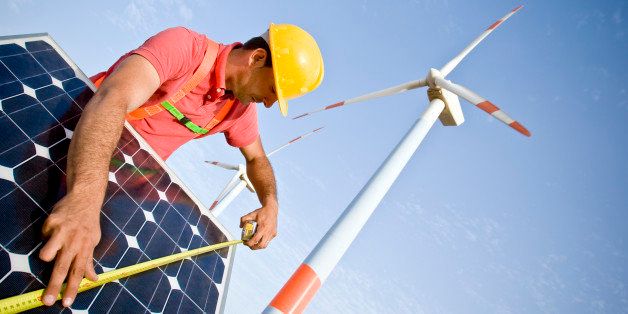
Recently, the Environmental Protection Agency (EPA) unveiled a proposal to reduce carbon emissions aggressively -- by 30 percent below 2005 levels by 2030. It will create economic opportunities, improve public health especially among children and seniors, and curb the harmful impact of dirty power plants on the environment. It also avoids a potentially clumsy federal "one-size-fits-all" approach, by requiring and empowering each state to craft its own pollution reduction strategy. When each state is a laboratory, we are most likely to find the best practices.
California is already leading the nation when it comes to bold action to cut carbon emissions. We are on target to cut carbon emissions statewide by 25 percent below 2005 levels by 2025. We are leaders in energy efficiency over recent decades -- it's estimated that we've lowered demand by 12.5 percent through efficiency, spurred by numerous policies including updated building efficiency standards and rebates for homeowners achieving energy efficiency. We also have a renewable portfolio standard that requires utilities, providers, and aggregators to increase their renewable energy resources to 33 percent by 2020. These approaches have worked for California, and may be an example for other states to follow.
The new rule will call on California to continue to make significant additional progress. In fact, California is assigned one of the most aggressive targets under the potential rule -- nearly three times more ambitious than states like Kentucky, Montana, and Kansas -- because we have the resources and capability to achieve it. Both California as a whole, and my district in the San Diego region, are hubs of energy technology innovation.
This proposal, when finalized in 2015, will give innovative businesses clear market signals and spur investments in our domestic clean energy market. It will bring new opportunities at retrofitting plants, laying down pipelines, and in energy efficiency improvements -- jobs that cannot be shipped overseas. In San Diego more than 8,000 people are employed in green energy, a number rising with increased residential solar implementation. These are high-quality, high-paying jobs, and many of these companies are actively hiring local veterans. Across America, the solar industry already employs more than 100,000 people and the job market continues to experience record-breaking growth.
Efforts to tackle carbon pollution should be paired with an attack on other potent greenhouse gases. "Super Pollutants" like methane and black carbon are tens to thousands of times more potent than carbon in trapping heat. My proposed legislation, the "Super Pollutants Emissions Reduction (SUPER) Act," is aimed at reducing these harmful pollutants that are contributing to climate change. If we can decease emissions of both superpollutants and carbon, we can mitigate climate change in the short-, medium-, and long-term.
It's clear that many members of Congress don't see addressing climate change and reducing carbon emissions as an urgent priority, but scientists trained at the world's best universities think it should be. In San Diego we are already feeling the impact of a changing environment through more prevalent droughts, wildfire seasons that start earlier and last longer, and rising sea levels. We've got to take action now to address the root causes, before it's too late.
- - - - - -
Scott Peters represents the 52nd District of California in the U.S. House of Representatives, which encompasses Coronado, Poway, and large portions of the City of San Diego. He is a member of the Safe Climate Caucus and is Chair of the Climate Task Force in the House Sustainable Energy and Environment Coalition (SEEC).
This post is part of a series from the Safe Climate Caucus. The Caucus is comprised of 38 members of the House of Representatives who have committed to ending the conspiracy of silence in Congress about the dangers of climate change. For more information, visit the Safe Climate Caucus website and like the Safe Climate Caucus on Facebook.
